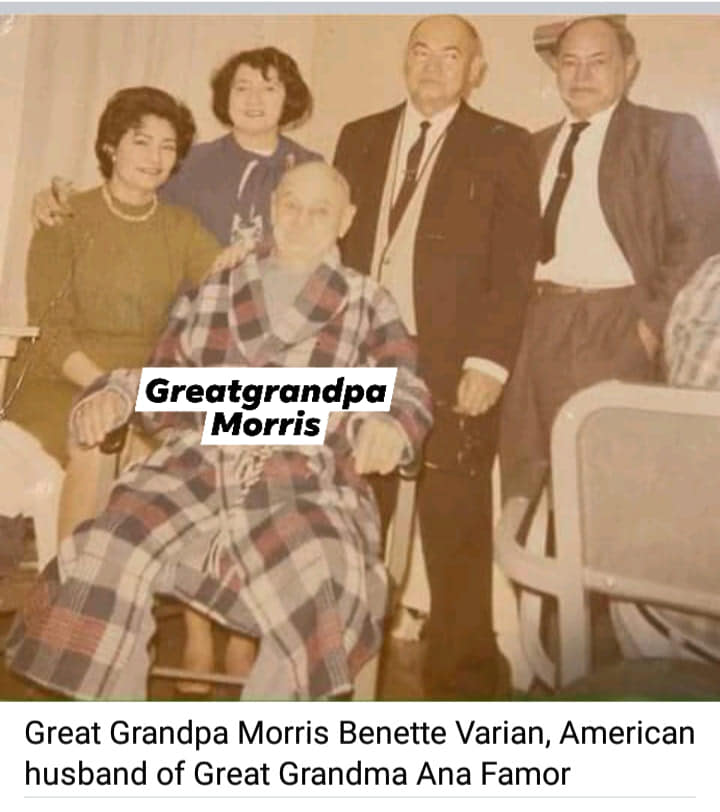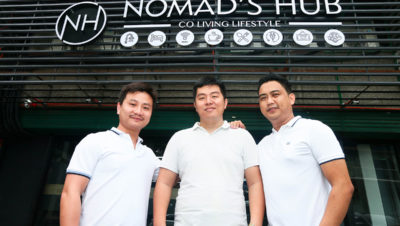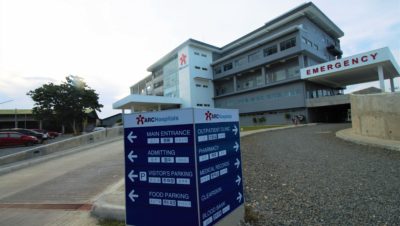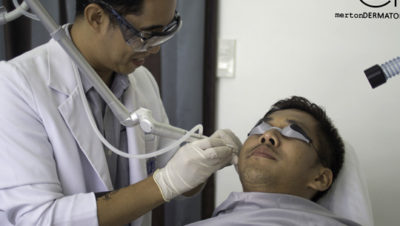This is a repost from an article I wrote for The Freeman Newspaper in 2006)

Maternal great-great-grandparents. Mary Famor Varian-Atilano and Don Crispin Rico Atilano
I have visited Don Merto’s Deli and Restaurant in Banilad Town Center twice, the first time when they opened and the second time when they held their Australian Food Tasting on 6th February 2006.
In a comfortable setting, surrounded by mostly European delicatessen that I couldn’t observe up close the surrounding, the photos on wall not until I overheard Mr. Jimmy Escano, the owner, discussing the photos with SunStar’s Pura Quintanar and his paternal grandfather, Dr. Mamerto Escano, Ph.D. They discussed the pictures of the train from Danao to Carcar. I jumped out of my chair and got goosebumps because I realized what I had read in my mother’s family history book was actually true – about the trains and all.
I was never interested in Philippine history in my early school years until I entered college. I used to be one of those people who wanted the bell to ring automatically before my history teacher started opening history books, but when I got our family history book a few years ago, my perspective on history changed.
Not only interested in genealogical stories, I am also curious about what the Philippines used to be like and how rich our country was with great history and innovations that could have been preserved.
I grew up in my father’s family, who are originally from the 400-year-old town of Boljoon, Cebu, with whom I shared a very close family tie.
I didn’t have the opportunity to be with my mother’s relatives because everyone I know lived mostly in Zamboanga, Davao or overseas.

As far as I know with my maternal side is that my mother, Maribel Atilano’s family, was all about her grandfather, Crispin Atilano.
Crispin Atilano became the youngest Mayor in Zamboanga City and migrated to Margosatubig, having been assigned as deputy governor there. His wife was Mary Varian Atilano – who I only know as half American until I got hold of the history book talking about my great-grandmother’s colorful family background.
I felt proud upon learning that my great-grandfather (the biological father of Mary Varian was William Clayton, an American soldier who fought hand in hand with the Filipino revolutionaries to oust the Spanish regime and helped bring about Philippine Independence on June 12, 1898, under the leadership of Emilio Aguinaldo.
My great-great-grandmother Ana Famor Varian was from Simala, Sibonga , Cebu, who later married Morris Varian – also an American soldier and a descendant of Captain James Varian in the Scarsdale-White Plains-Brown Point company of the 2nd (middle) regimen during the war of the Americans against Great Britain in the 1700’s. James Varian was the brother of Isaac Varian, who became the Mayor in New York City in the early 1800’s.
At first, I thought I was related to the Varians, but after thorough research and with the help of a dear friend of mine, Ms. Carolyn Gutermuth of Maryland (USA), I was able to exchange emails with one of the granddaughters of Morris and Ana Varian. She is Helen Varian Davis, who is also my great-grand-aunt through Anna Famor.

She told me that my great-grandmother Mary was Ana Famor first child with her first husband William Clayton, who died early in life. Ana decided to later marry Morris Varian and adopted Mary.
Until now, my relatives are in search of William Clayton’s lineage, checking on the ancestry website, and trying to get hold of the war records in Washington D.C. because he died when my great grandmother was still an infant. Based on what I have understood, being adopted and a half-sister of the thirteen siblings of Morris and Ana was kept secret during the early years that’s why only a few knew who William Clayton was and none of my living relatives know about him at all, except for being an American soldier in 1898.
How did my great grandmother Mary met Crispin Atilano? Well, she was attending Ebenezer School for Girls in Zamboanga City and that’s how my great grandfather saw her and was smitten.
Indeed, I can call myself a true-blooded Cebuana from my maternal and paternal side, tracing my lineage from Sibonga, Carcar, and Boljoon. With this discovery, I got to know the core of my being. It has given me a clearer vision of what to do in the future.
My great grandfather’s story is equally interesting, tracing his roots in Brunei (separate story)
I was amazed at how far I had researched my family tree and their lives during the Japanese invasion of the Philippines. How my relatives went to war and told us about the train as their means of transportation going to Sibonga to escape from the Japanese soldiers. I used to think they were exaggerating not until I saw the photos on the wall of Don Merto’s Deli and Restaurant, a photo of Dr. Escano onboard a train going to Danao. I wish my ancestors kept pictures too.
I am just among those Filipinos who have stories to tell about their family history. I know there are also a lot of other interesting stories of families in the past. They don’t need to be connected to great men like Jose Rizal and Emilio Aguinaldo to be appreciated.
Why not start today, getting in touch with your roots? You will be astounded on every discovery you will make as you flip through the pages of your family history. From there, you will grow to love not only your family but your country, as well.

With this experience, I have grown to love history and value the Filipino’s sacrifices in making our country what it has become today. Let us preserve our cultural heritage. Let us support the people of the Cultural Heritage Center who have exerted efforts in nurturing the richness of our history.
Despite the political crisis, we are into, it doesn’t stop me from saying that the Philippines is indeed a paradise rich in history.
Read more at https://www.philstar.com/cebu-lifestyle/2006/02/16/322006/search-my-roots#kgd2Q0gDBSEmtzDV.99
comments are temporarily disabled.












